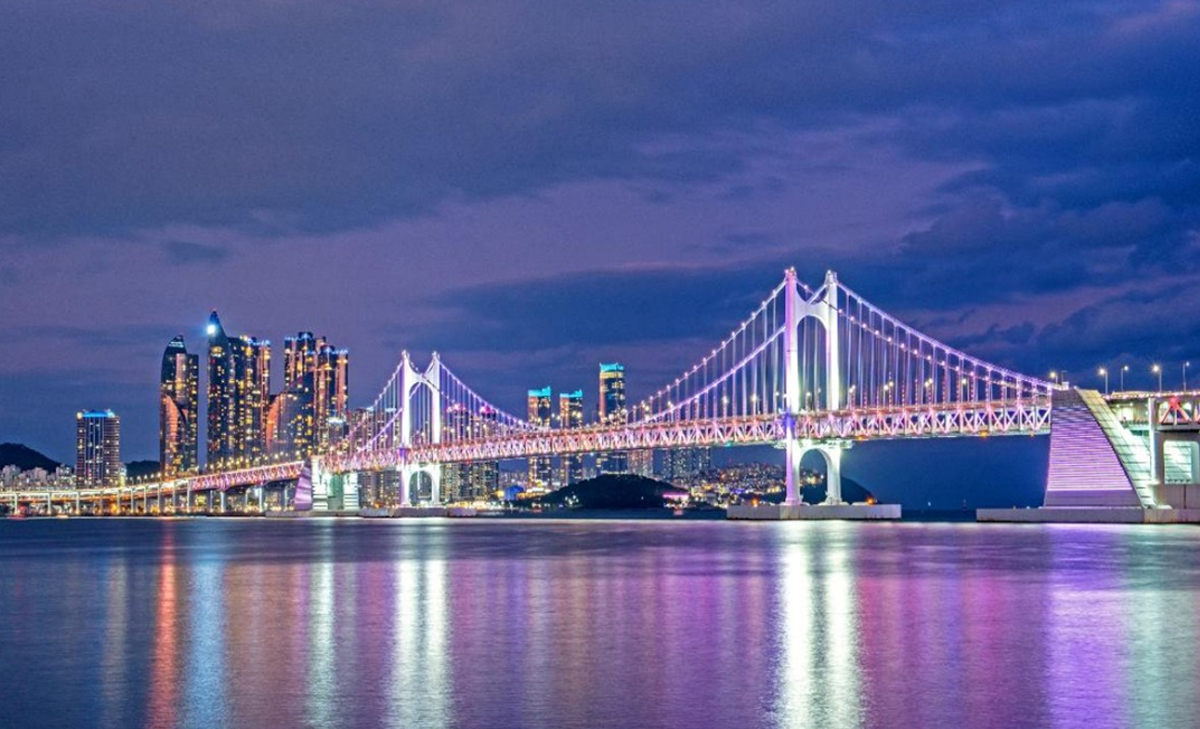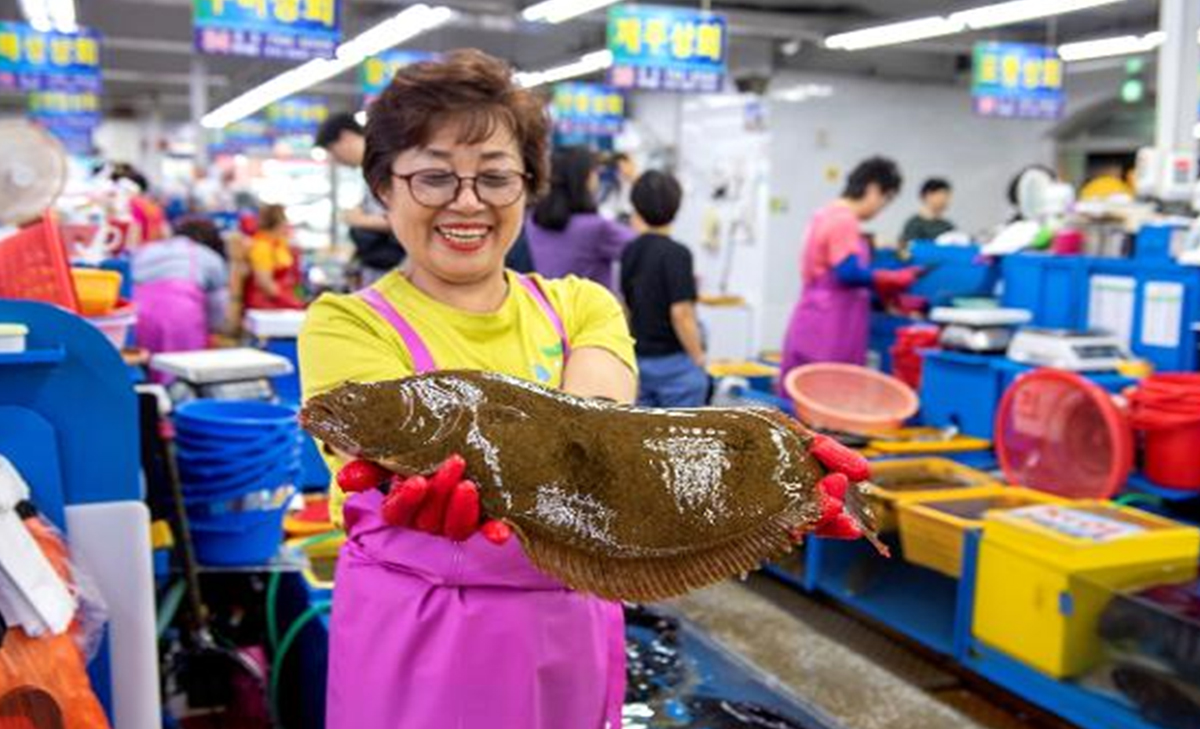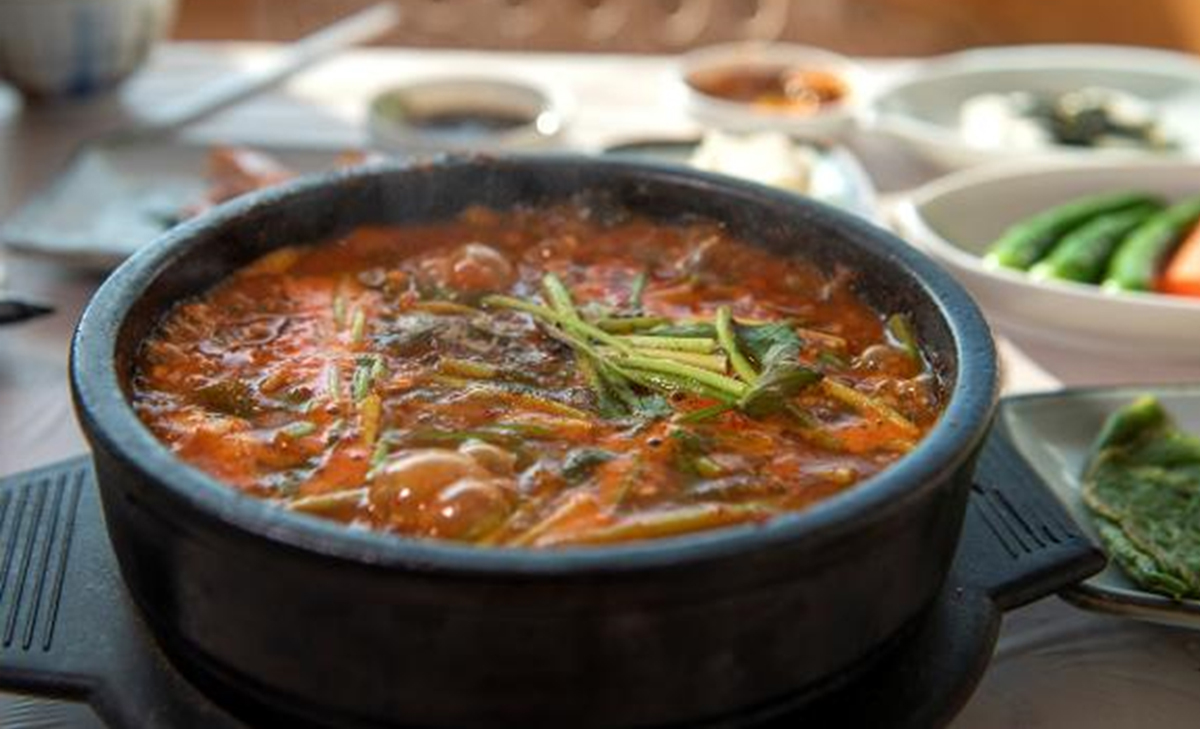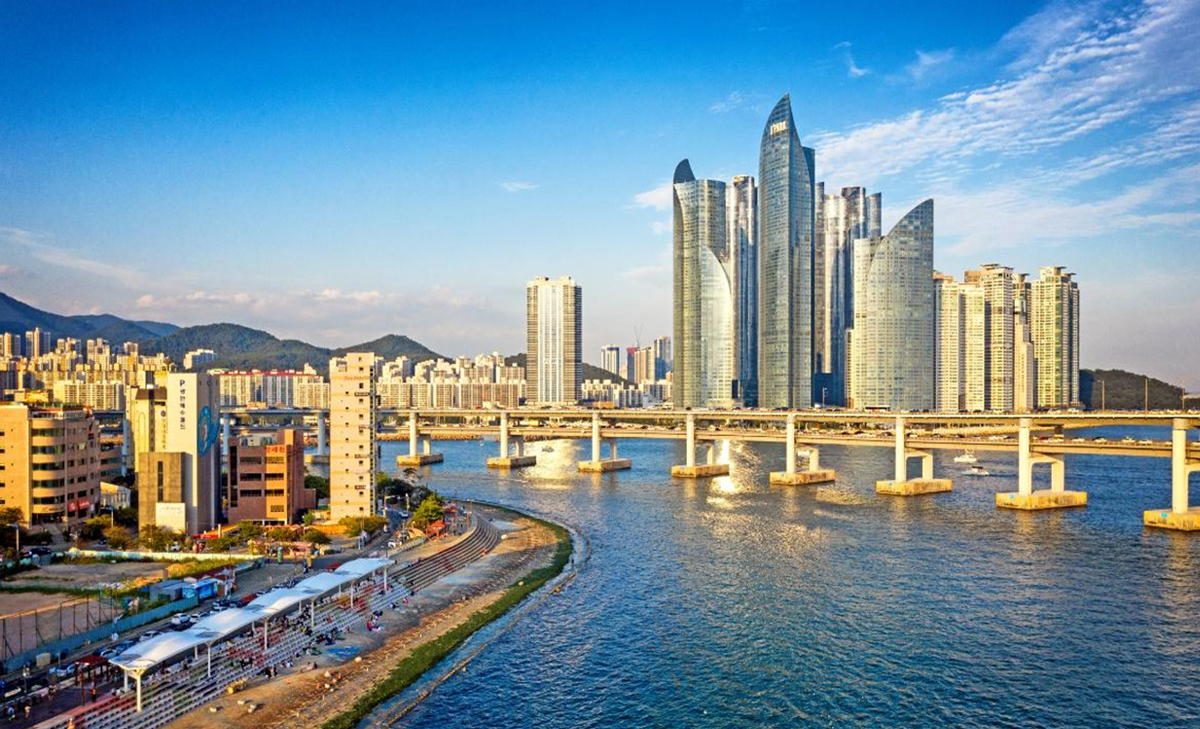Busan
DISCOVER BUSAN

-
Busan is Koreans’ favorite destination for holidays. As Korea’s second largest city and world’s 5th busiest port, Busan is a world-class city and home to 3.5 million residents. The inimitability of Busan is not in the memoirs of its time but in the ways in which history is associated with the perception of modernity. If you are looking for an exhilarating adventure in mountainous coasts, relaxing and serene moments in Buddhist temples, exciting shopping time in world’s celebrated shops and traditional markets, awakening time in museums and galleries, or amusing opportunities to become a time-traveler in time-honored premises, then Busan is the one and only place you want to be with your colleagues and family.
THE ESSENCE OF KOREAN CUISINE

-
Busan's coastal location makes it a seafood lover's paradise. The city is renowned for its diverse range of fresh catches from the ocean, ensuring an unparalleled seafood experience. Be sure to try the iconic dish, "hoe," which consists of raw slices of fish, octopus, or other seafood, marinated in a tangy sauce. It's a true delight for the senses. Also, Eomuk, fish cakes, are a staple in Busan's street food scene. These chewy and flavorful fish cakes come in various shapes and sizes and are often served on skewers or in warm soup. Dip them in a savory sauce for an authentic Busan experience, and you'll understand why locals and visitors alike can't get enough of this delightful treat.

-
For a hearty and comforting meal, indulge in Dwaeji Gukbap, a savory pork and rice soup. Tender slices of pork are simmered to perfection in a flavorful broth, served with a generous portion of rice and various toppings like green onions, sesame seeds, and kimchi. This dish is a local favorite, providing warmth and satisfaction.
At the heart of Dwaeji Gukbap lies a rich, savory broth that forms the foundation of the dish. Made by simmering pork bones for hours, the broth becomes a fragrant elixir of flavors. It is infused with garlic, ginger, soy sauce, and various aromatic spices, resulting in a deeply satisfying and aromatic base that warms the soul. The tender slices of pork are then added, imparting their succulent essence into the broth.
THE CLIMATE OF BUSAN

-
During the summer months in Busan, which typically extend from June to September, temperatures are relatively high. Average daytime temperatures range between 25°C to 30°C (77°F to 86°F), with occasional heatwaves pushing the mercury even higher. Nighttime temperatures hover around 20°C to 25°C (68°F to 77°F), providing some relief from the daytime heat.

-
Busan's summers are characterized by high humidity levels. The city is situated on the southeastern coast of the Korean Peninsula, surrounded by water bodies such as East Sea and the East China Sea. This proximity to water contributes to the humidity, with humidity levels often exceeding 70% during the summer months. The combination of high temperatures and humidity can make the air feel quite muggy.
BUSAN's EXQUISITE GEMS
 Busan, known as the "Summer Capital of South Korea," boasts a stunning coastline and some of the most captivating beaches in the country. The charm of Busan beaches lies in their unique blend of natural beauty, vibrant atmosphere, and diverse recreational activities. There are some beaches that make Busan truly special. Haeundae Beach is perhaps the most famous and popular beach in Busan. It stretches over 1.5 kilometers and offers a wide sandy shoreline, making it perfect for sunbathing, beach volleyball, and various water sports. The beachfront is lined with luxury hotels, restaurants, cafes, and shops, creating a lively and vibrant atmosphere. Gwangalli Beach is another beloved destination known for its stunning views and vibrant nightlife. It is famous for its Gwangan Bridge, which illuminates the night sky with a colorful light show. The beach is a favorite spot for young locals and tourists alike, who come here to relax, enjoy live performances, and indulge in delicious seafood at the nearby restaurants.
Busan, known as the "Summer Capital of South Korea," boasts a stunning coastline and some of the most captivating beaches in the country. The charm of Busan beaches lies in their unique blend of natural beauty, vibrant atmosphere, and diverse recreational activities. There are some beaches that make Busan truly special. Haeundae Beach is perhaps the most famous and popular beach in Busan. It stretches over 1.5 kilometers and offers a wide sandy shoreline, making it perfect for sunbathing, beach volleyball, and various water sports. The beachfront is lined with luxury hotels, restaurants, cafes, and shops, creating a lively and vibrant atmosphere. Gwangalli Beach is another beloved destination known for its stunning views and vibrant nightlife. It is famous for its Gwangan Bridge, which illuminates the night sky with a colorful light show. The beach is a favorite spot for young locals and tourists alike, who come here to relax, enjoy live performances, and indulge in delicious seafood at the nearby restaurants.
 Gamcheon Culture Village, located in Busan, South Korea, is a vibrant and colorful neighborhood known for its unique and artistic atmosphere. Nestled on a hillside overlooking the sea, the village is characterized by its narrow alleyways, steep staircases, and pastel-colored houses. Once a slum area, the village underwent a revitalization project in 2009, transforming it into a cultural hub and tourist attraction. Today, Gamcheon Culture Village is famous for its street art, murals, and sculptures that adorn the walls, rooftops, and corners of the village. Artists from around the world have contributed to the artistic transformation, creating a whimsical and visually stunning environment. The village has become a popular destination for both locals and tourists, attracting art enthusiasts, photographers, and curious travelers. It provides a unique blend of cultural immersion, creative expression, and natural beauty, making it a must-visit spot for anyone exploring Busan.
Gamcheon Culture Village, located in Busan, South Korea, is a vibrant and colorful neighborhood known for its unique and artistic atmosphere. Nestled on a hillside overlooking the sea, the village is characterized by its narrow alleyways, steep staircases, and pastel-colored houses. Once a slum area, the village underwent a revitalization project in 2009, transforming it into a cultural hub and tourist attraction. Today, Gamcheon Culture Village is famous for its street art, murals, and sculptures that adorn the walls, rooftops, and corners of the village. Artists from around the world have contributed to the artistic transformation, creating a whimsical and visually stunning environment. The village has become a popular destination for both locals and tourists, attracting art enthusiasts, photographers, and curious travelers. It provides a unique blend of cultural immersion, creative expression, and natural beauty, making it a must-visit spot for anyone exploring Busan.
 Haedong Yonggungsa Temple, is a stunning Buddhist temple located in Busan, South Korea. Unlike many other temples in the country, which are typically nestled in mountains, Haedong Yonggungsa Temple is situated on a rocky cliff by the sea, offering breathtaking ocean views. The temple complex is adorned with beautiful statues, intricate carvings, and colorful lanterns, creating a serene and spiritual atmosphere. Visitors can explore the various pavilions, pagodas, and prayer halls while enjoying the peaceful sound of waves crashing against the cliffs. Haedong Yonggungsa Temple is not only a place of worship but also a popular tourist destination. Its picturesque location and unique architecture make it a favorite spot for both locals and tourists to experience the beauty and tranquility of traditional Korean Buddhism.
Haedong Yonggungsa Temple, is a stunning Buddhist temple located in Busan, South Korea. Unlike many other temples in the country, which are typically nestled in mountains, Haedong Yonggungsa Temple is situated on a rocky cliff by the sea, offering breathtaking ocean views. The temple complex is adorned with beautiful statues, intricate carvings, and colorful lanterns, creating a serene and spiritual atmosphere. Visitors can explore the various pavilions, pagodas, and prayer halls while enjoying the peaceful sound of waves crashing against the cliffs. Haedong Yonggungsa Temple is not only a place of worship but also a popular tourist destination. Its picturesque location and unique architecture make it a favorite spot for both locals and tourists to experience the beauty and tranquility of traditional Korean Buddhism.
Busan Tour
Download
Busan Tour Map
Download
Busan Metro Trip Guidebook
Download
Must-Visit Hot Places in Busan
Download
100 Great Places to Eat in Busan
Source from VISIT BUSAN Official Website
